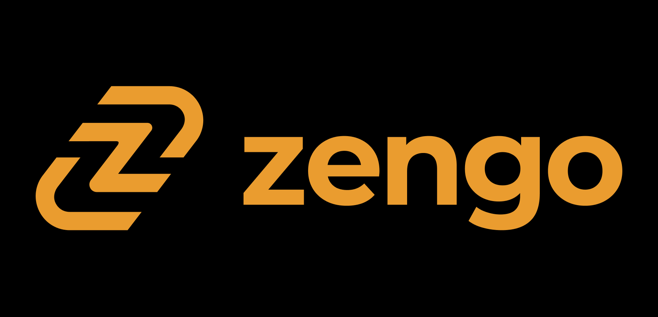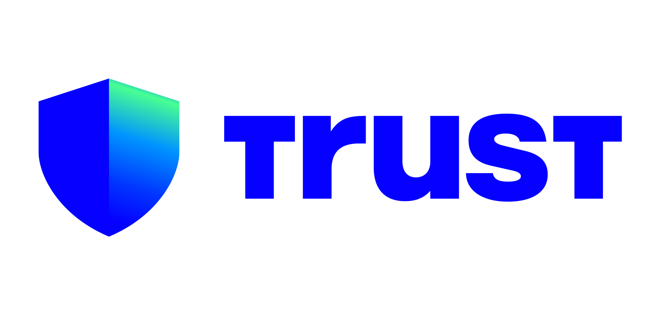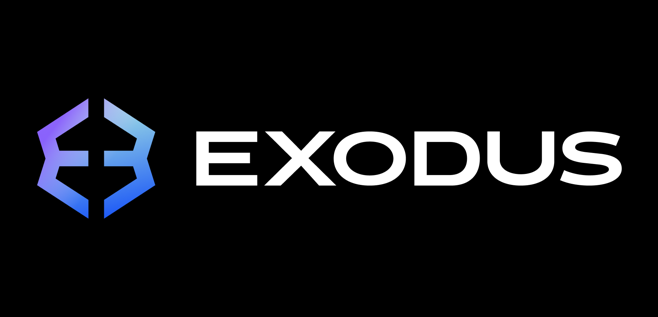Published 12 May 2025
Mobile Wallets with Staking Features: What You Need to Know

Mobile wallets with staking let you earn crypto rewards while keeping your coins safe and accessible. More than 30 million people use them every month — MetaMask alone hits that number — so they’re not just a niche tool anymore.
Some wallets, like Zengo, take security seriously. They don’t use seed phrases or private keys. Instead, they use something called MPC (Multi-Party Computation) to protect your assets. As of April 2025, Zengo has never been hacked.
Wallets like Trust Wallet and Crypto.com offer access to thousands of tokens. Trust Wallet works with over 10 million assets across 100+ blockchains. Crypto.com supports more than 1,000 and includes built-in staking and DeFi tools.
If you want full control of your crypto, non-custodial wallets are the way to go. You hold the keys, not the platform. This guide explains how mobile wallets work, how staking helps you earn passive income, and what to check before choosing a wallet.

What Is a Mobile Crypto Wallet and How Does Staking Work?
Mobile crypto wallets help you manage your coins right from your phone. They don’t store your crypto directly — instead, they give you access to it on the blockchain.
What Mobile Wallets Do
Mobile wallets are apps for your smartphone. They let you send, receive, and manage crypto easily. Most work on iOS and Android. You just need internet access to use them.
There are two types:
- Custodial wallets — a company controls your private keys.
- Non-custodial wallets — you control the keys yourself.
If you hold the keys, you hold the coins. That’s the basic rule.
Some wallets let you pay in stores using NFC or QR codes. Many also support several cryptocurrencies at once, so you don’t need multiple apps to manage different coins.
What Staking Means
Staking is how some blockchains stay secure. You lock up coins to help run the network and, in return, earn rewards. It’s like earning interest — but with crypto.
With staking, your coins are frozen for a time. You can’t trade or spend them while they’re locked. Rewards vary. For Ethereum, it’s usually 3–5%, but some platforms offer more — up to 33% in rare cases.
Staking works through validators. They process transactions and keep the network running. If they cheat, they lose part of their coins. This system is called “slashing”, and it keeps things honest.

Why More Investors Are Choosing Staking
Staking is becoming a go-to strategy for crypto holders. You don’t need to sell your assets to earn from them. It’s passive income that works like earning interest — only often with better returns.
Ethereum staking grew by 27% in 2024, reaching over 34.7 million ETH. More than a million validators joined the network. That kind of growth shows staking isn’t just a trend — it’s a key part of investing now.
It’s not just about making money. Staking also supports the blockchain. When you stake, you help keep the network secure and decentralized. You’re not just a bystander — you’re part of the system.
Staking also reduces how much crypto is available to trade. Locked coins can’t flood the market, which helps with price stability. Right now, around 800,000 ETH are staked for at least a year.
And compared to mining, staking is much easier on the environment. It doesn’t use massive amounts of electricity. For investors who care about sustainability, this matters.

Types of Staking Wallets: Hot, Cold, Custodial, and Non-Custodial
Choosing the right wallet is important. It affects how secure your crypto is and how easy it is to use.
Hot Wallets
Hot wallets are always online. They’re great for quick access, daily use, and simple staking. Apps like MetaMask, Trust Wallet, and Coinbase Wallet fall into this group.
You can start staking with just a few taps. These wallets usually have clear interfaces, no special hardware needed, and they work well with DeFi apps.
But being online all the time makes them easier targets for hackers. If you’re staking large amounts, experts suggest using hot wallets only for small balances or short-term use.
Cold Wallets
Cold wallets stay offline. They protect your crypto from online attacks. Devices like Ledger Nano X and Trezor Model T are common options.
With cold staking, you keep your private keys offline but still earn rewards. You can delegate staking to validators while your funds stay in secure hardware.
Cold wallets are better for holding large amounts long term. They’re especially popular with institutional investors who care more about safety than convenience.
Custodial Wallets
Custodial wallets are managed by third parties — usually exchanges or financial platforms. You don’t control the private keys. The platform does.
They’re easier to use, especially for beginners. You don’t have to worry about backup phrases or technical details. These wallets often come with customer support and strong platform-level security.
Non-Custodial Wallets
Non-custodial wallets give you full control. You hold your keys, so you control your assets. There’s no third party involved.
This setup is safer from outside risks but puts the responsibility on you. If you lose your recovery phrase, there’s no support team to help. Still, many crypto users prefer this option because it sticks to the original idea of crypto — own your assets, no middlemen.
As they say: "Not your keys, not your coins."

Top 5 Mobile Wallets with Staking in 2025
Here are five mobile wallets that stand out in 2025. They all support staking and offer different features for different needs.

1. Zengo — No Seed Phrases, Just Security
Zengo uses MPC (Multi-Party Computation) instead of seed phrases. You log in with email, face scan, and a recovery file. It’s self-custodial, and no hacks have been reported so far.
Zengo supports staking for Ethereum and Tezos. Rewards go up to 8% per year. You don’t have to lock up your crypto. Rewards are auto-compounded, and your funds stay accessible.

2. Trust Wallet — Wide Support and Easy Staking
Trust Wallet supports over 10 million digital assets on 100+ blockchains. As Binance’s official wallet, it also includes built-in swaps and trades.
You can stake more than 24 different coins right in the app. Some rates: Ethereum at 2.95% APR, Solana at 4.55%, and Polkadot at 14.59%. No need for middlemen.

3. Crypto.com DeFi Wallet — Built for DeFi Users
This wallet (now called Crypto.com Onchain Wallet) is non-custodial and supports over 4,000 tokens across 30+ blockchains.
You can stake coins like ETH and SOL with no forced lock-up. Rewards are auto-compounded. Sometimes, the network requires a 1–2 day wait to unstake.

4. Exodus — Clean Interface, Trezor Support
Exodus works with over 250 coins and pairs well with Trezor hardware wallets. It’s easy to use and has clear options for staking.
You’ll find a Rewards app on desktop and a Staking section in the mobile app. Each coin has its own rules — some rewards come automatically, others need to be claimed.

5. Guarda — Flexible and Broad Coverage
Guarda is a non-custodial wallet with support for 50+ blockchains and thousands of tokens.
You can stake coins like Ethereum, Cardano, Tezos, and Ontology. Some rewards go up to 30%. You don’t need large amounts to get started, and you can unstake when needed.

How to Choose a Good Staking Wallet
Not all wallets are the same. If you want to earn from staking and stay safe, pay attention to these key things.
Focus on Security First
Security should always come first. Look for wallets that offer two-factor authentication (2FA), face or fingerprint login, and hardware wallet support. Some wallets, like Zengo, don’t use seed phrases — they use MPC, which splits your private keys and stores parts in different places. This lowers the risk of phishing.
If you’re staking big amounts, use wallets that support hardware devices like Ledger or Trezor. They keep your keys offline and much harder to steal.
Check Which Coins You Can Stake
Each wallet supports different coins and offers different rewards. Big-name wallets support between 30 and 300+ coins. Typical returns range from 3% to 7%. Some coins offer more, but higher rewards usually come with higher risks.
Also check:
- The minimum amount required to stake
- How long your funds are locked
- How fast you can unstake
Look for Simplicity
A good wallet should be easy to use. Clear instructions, simple layouts, and helpful recovery options matter — especially if you’re just getting started. Some wallets use email for recovery instead of seed phrases. That can be easier for many users.
Cross-device use is another plus. If your wallet works on both desktop and mobile, that gives you more flexibility.
DeFi and Exchange Access
The best wallets let you connect directly to DeFi protocols and exchanges. That way, you can trade, provide liquidity, or earn extra yield without switching apps. Support for multiple blockchains is also a big advantage.

How to Use Mobile Staking Wallets Safely
Staking can earn you passive income — but only if your assets are secure. Here’s how to protect your crypto while using mobile wallets.
Back Up Your Wallet
Your recovery phrase is the key to your funds. Store it offline, away from your phone or computer. Use a fireproof container or write it on a metal plate to avoid water or fire damage.
For extra safety, split the phrase and keep parts in different places. If you use cloud backups, encrypt them. Services like iCloud or Google Drive can help — but only if locked down with strong passwords and two-factor authentication.
Avoid Fake Apps and Phishing
Only download wallets from trusted sources — the official website or app store. Never share your recovery phrase, private key, or wallet info through email, chat, or pop-ups. Scammers often copy wallet apps with small changes, so double-check names and permissions.
If the app looks strange or asks for unusual access — delete it.
Add a Hardware Wallet
If you’re staking serious amounts, get a hardware wallet. Devices like Ledger or Trezor keep your private keys offline, even when connected to a mobile app. This adds a strong extra layer of protection.
Track Performance and Fees
Keep an eye on your staking rewards and any fees. Use apps or dashboards that let you monitor balances, income, and performance across blockchains. For better security, some users check their wallets on desktop instead of mobile.
Strong options include:
- Multi-signature access
- Smart contract audits
- Separate keys for withdrawals
Following these steps helps you earn safely while keeping your assets under control.

Conclusion
Mobile wallets with staking are now a key part of crypto investing. They let you earn rewards, stay in control of your assets, and choose the level of security that works for you.
Hot or cold, custodial or not — each wallet type has trade-offs. What matters is picking one that fits how you use crypto and how much control you want over your keys.
Top wallets like Zengo, Trust Wallet, Crypto.com, Exodus, and Guarda each offer something different. Some focus on strong security, others on wide coin support or ease of use.
Don’t just chase the highest rewards. Look at the full picture — security, supported coins, how easy it is to use, and what tools the wallet connects to. And always back up your recovery phrase, avoid phishing traps, and consider using a hardware wallet if you're staking large amounts.
Staking through mobile wallets isn’t just about convenience — it’s a smart way to grow your crypto while staying involved in the network. If you choose the right tools and follow safe habits, it works.
Read More




 Get RateX Pro
Get RateX Pro

 14 May 2024
14 May 2024
